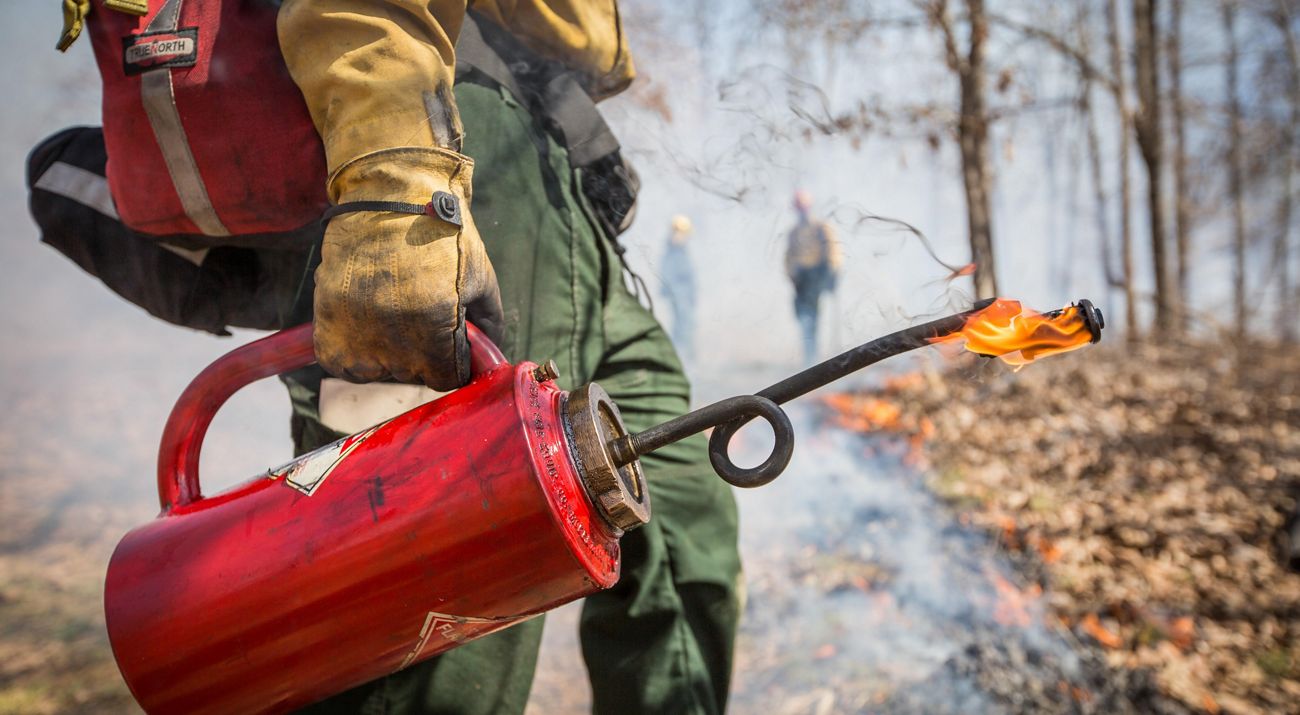Kentucky Fire Management
Learn how we're using controlled burns to limit wildfire spread and protect natural habitats in Kentucky.
TNC in Kentucky joins a broad coalition of partners throughout the state to conduct prescribed burning, a management practice that helps keep Kentucky’s grasslands healthy, removes the thatch layer from the ground to allow sunlight in and seed germination to occur, and opens up the forest floor, reducing fuels and lessening the risk of wildfire.
The Nature Conservancy carefully selects areas for prescribed fire. High-priority land may support rare species that depend on fire. Once an area is chosen, fire management goals may include reducing invasive plants, eliminating woody encroachment into native grasses, keeping the forest floor open by reducing tree and sapling density, and providing beneficial habitat for species such as grassland nesting songbirds and insects. Burns are carefully planned, or “prescribed,” to ensure safety and success. Wind, temperature, humidity, and other factors must fall within this prescription for a burn to take place. TNC has performed controlled burns for more than 50 years, with highly trained staff who are certified to the same standards as those required for wildland firefighting.
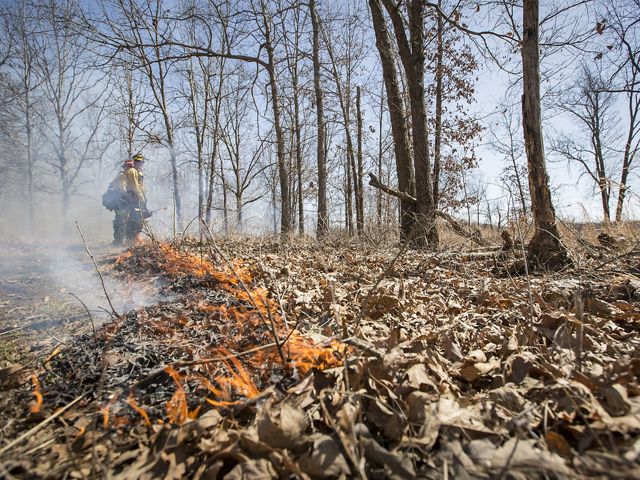
Planning and Implementing Fire
A prescribed fire starts weeks or months ahead of time with a detailed plan. A burn unit is delineated, based on the ecology of the site, the benefits to vegetation, and the need for prescribed fire. “You determine what season you need to have the fire take place based on the vegetation you’re managing,” says Chris Minor, director of land management and fire management. “Then you write your prescription.”
A prescription lists the burn’s objectives and other elements, such as who will be notified the day of the burn. When the season comes around, burn personnel must make notifications to partners and landowners. Then the Burn Boss will begin to assemble a crew.
“When the time gets closer, you start really watching the forecast,” says Minor. “There are very specific weather parameters that we’re looking for to burn. In some cases, it gets down to a specific wind direction.”
The day of the fire, burn personnel meet at the burn site and unload their equipment. Minor says he distributes the burn plan and gets everyone to walk around the burn unit, familiarizing themselves with the firelines. He then conducts a briefing, assigns tasks, and gives an overview for the day’s objectives.
“We put fire on the ground with a test burn,” Minor says. “It usually takes 10-15 minutes. If the test burn is good, we’ll call it a go and keep on burning.”
Quote: Chris Minor
There are very specific weather parameters that we’re looking for to burn. In some cases, it gets down to a specific wind direction.
Once ignitions are made, the crew lets the fire spread throughout the burn unit. Depending on the weather and other factors, it might take anywhere from a few minutes to several hours for the fire to spread. Once the fire operation is complete, the crew lets the fire burn down and then begins to “mop up,” or cool off anything that’s within 50-75 feet from the fireline. Minor walks through the burn unit, look at vegetation to see if the fire’s requirements have been met. “Basically, we’re looking at and gauging the heat heat and intensity the was on the vegetation,” says Minor. “On the trees, we’ll see if we’re busting sap, and what kind of scorch height we have.”
The team ensures that the burn unit is cool before they leave the site. “If everything is safe and buttoned up, and depending on the next day’s weather, we call it a rap,” Minor says. “But we visit the site the next day to make sure the back door is closed and everything is good.”
At the end of the season, Minor reports all of the burned acreage in TNC’s reporting systems. He then works on a budget and writes grants for the following season. Working with partners around the state, TNC burned approximately 11,000 acres of land in 2018.
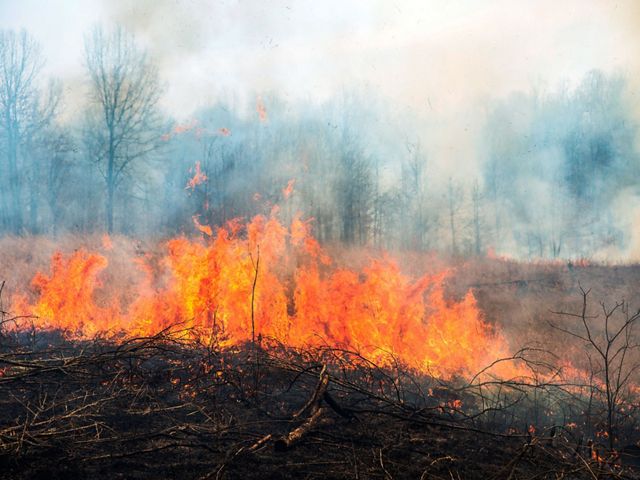
Training to Apply Fire
TNC's Kentucky fire team consists of Chris Minor, director of land management and fire manager, and conservation practitioner Zach Pickett.
“I took a training in college, did my pack test and got my red card, which allowed me to fight forest fires,” Minor says. “I started with TNC in 1999, and my first fire happened in the fall. I got to spend some time with folks watching some really cool fire coming off the mountains and forests. It was just very interesting to me, to think about the changes to the landscape that fire can potentially make.”
Pickett also took his first fire training while in college, hoping it would make him more marketable for a job. “The job market in 2014 wasn’t looking good for conservation,” Pickett says. “Any advantage I could have would be beneficial.”
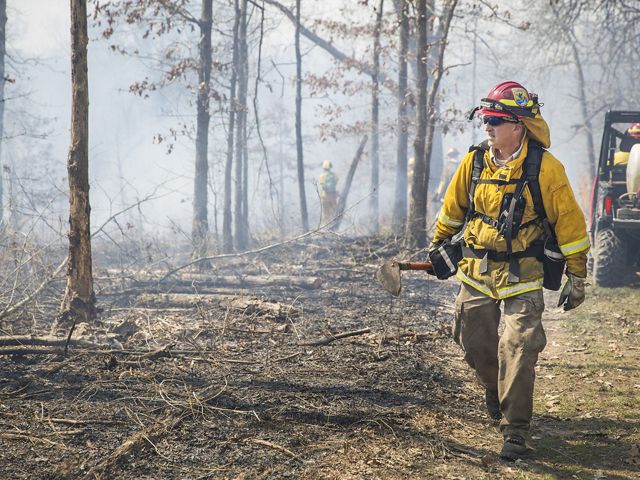
Fire personnel must take baseline coursework, including introductory classes and a physical fitness test. This gets individuals to the federal and TNC standard to participate on prescribed fires. Fire workers at this level, known as Firefighter Type 2, focus mostly on holding the fire inside the burn unit, and may do some igniting as well.
“You progress up from there, and each level you progress you have a position task book that you have to fill out, checking boxes on specific tasks,” Minor says. “You’ve got to size up a wildfire, which is a big one that catches a lot of people, because most of our job at TNC is prescribed fire. But to enable us to advance, you have to have exposure on these wildfires as well.”
Both Minor and Pickett have experience fighting wildfires in western states. They contributed several weeks of staff time to these efforts in 2018.
Sizing up a wildfire and communicating with aircraft are two key tasks that get an employee to the Firefighter Type 1 level. The next levels are Single Resource Boss, Incident Commander Type 4, and finally prescribed fire Burn Boss types 2 and 1. “At each one of those levels, you have a significant amount of class work, and a task book to complete,” Minor says. “You have three years to complete each task book. For people who get a lot of activity, the process to becoming a Burn Boss can take 9 to 12 years of training and experience.”
Kentucky Fire Management
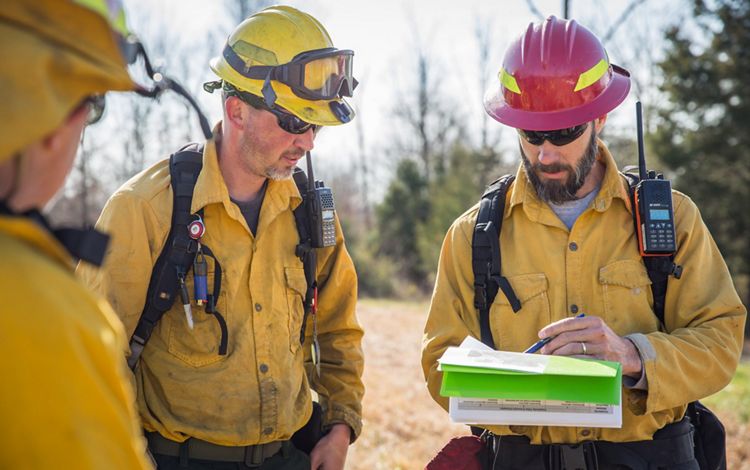
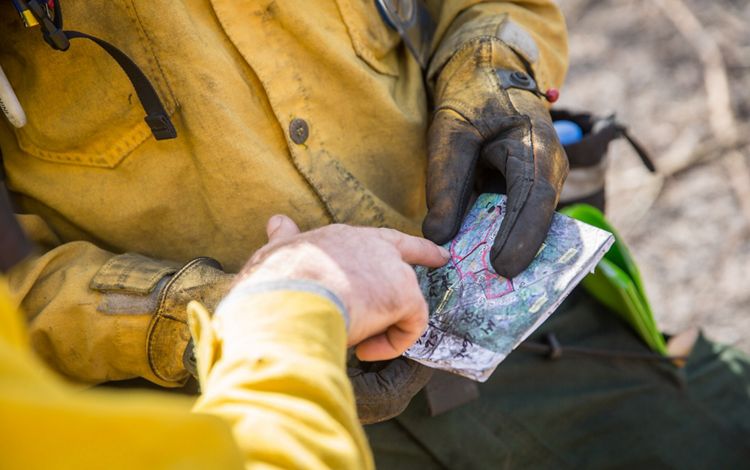
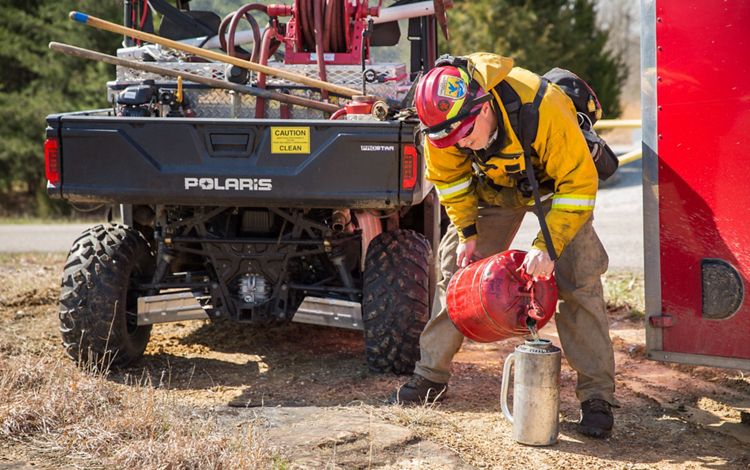
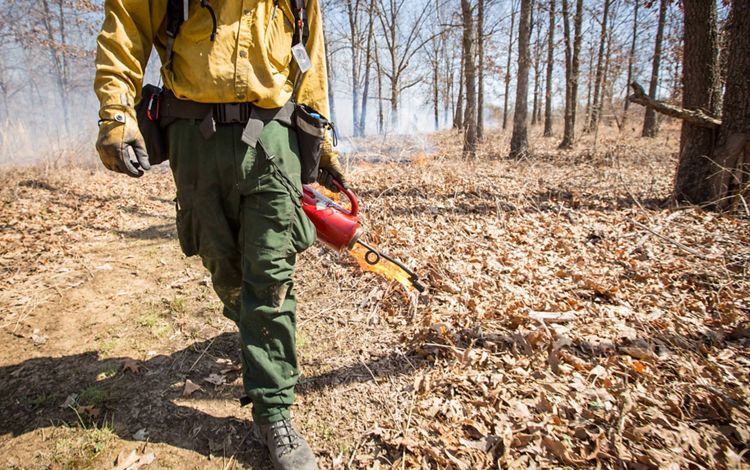
.jpg?crop=0%2C0%2C4000%2C2506&wid=750&hei=470&scl=5.333333333333333)
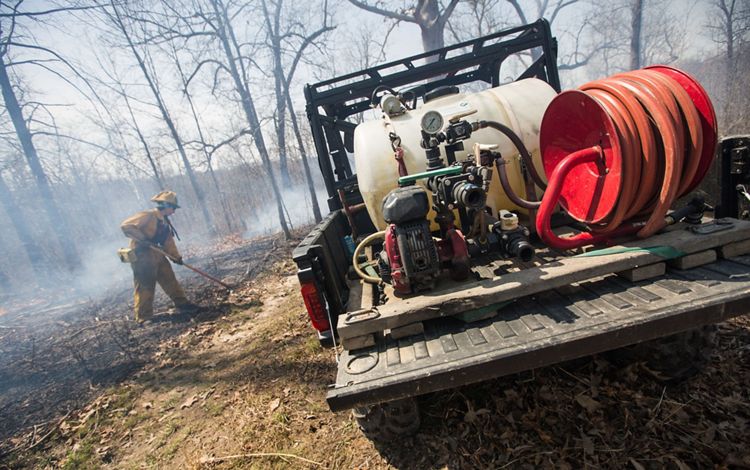
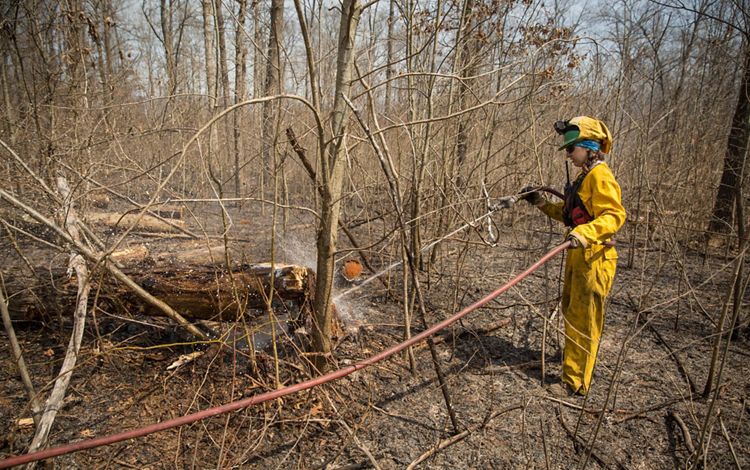
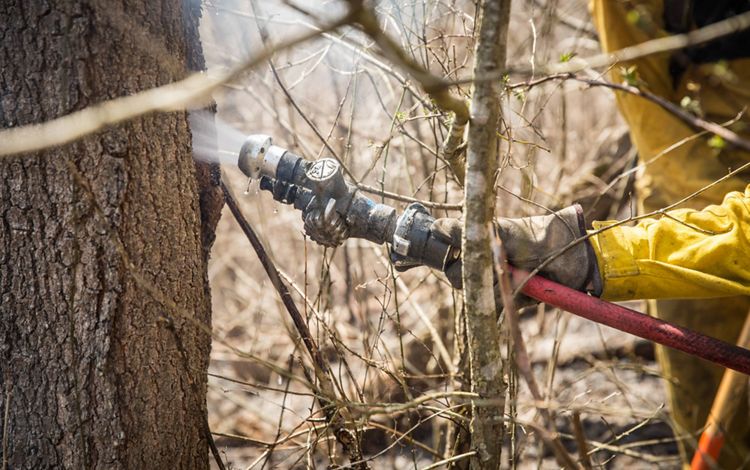
Stand Up For Nature
Support our work to protect nature in Kentucky.
